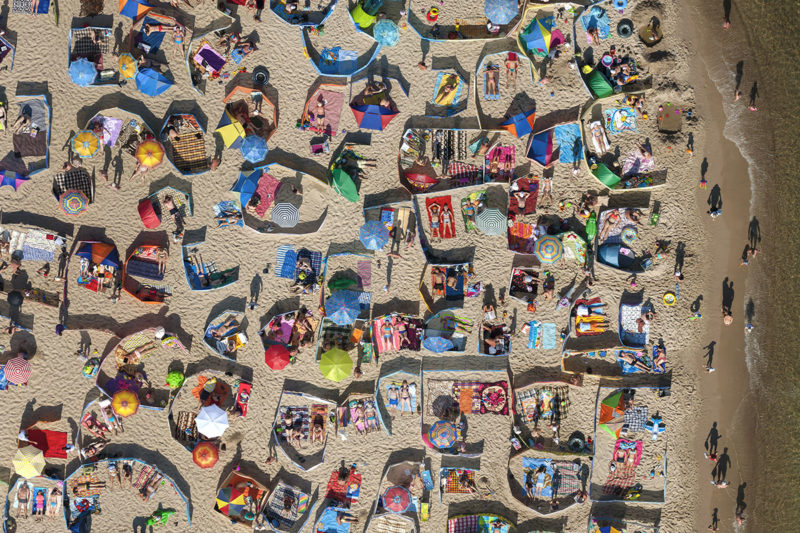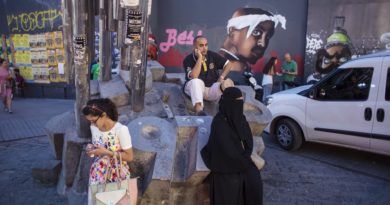Universal stories, local landscapes: Kacper Kowalski
Kacper Kowalski doesn’t fly to photograph, but photographs so he can fly. And we think what separates him from other aerial photographers is exactly this. When he lands, he doesn’t know what to shoot – except family photos- but when he flies he can show us the world with such a different and marvelous perspective.
Interview: Yetkin Nural
For Polish photographer and paraglider pilot Kacper Kowalski, the aerial photography started as a second thought. After he quitted architecture, a family business, to be able to fly, he also started looking for an “excuse” to support his flying financially. That was how photography became an interest for him. Since 1996 he has been soaring the skies around his home in Poland and creating visual stories about human traces on earth through what he sees around his home. His aerial photography, which breathtakingly shifts the perception of the audience about the world we live in and encourages us to think in new perspectives, brought him awards from prestigious agencies like World Press Photo, Grand Press Photo and POYi. Without further need for introduction, here is our talk with Kowalski about flying, experiences & emotions, drones, looking & seeing…
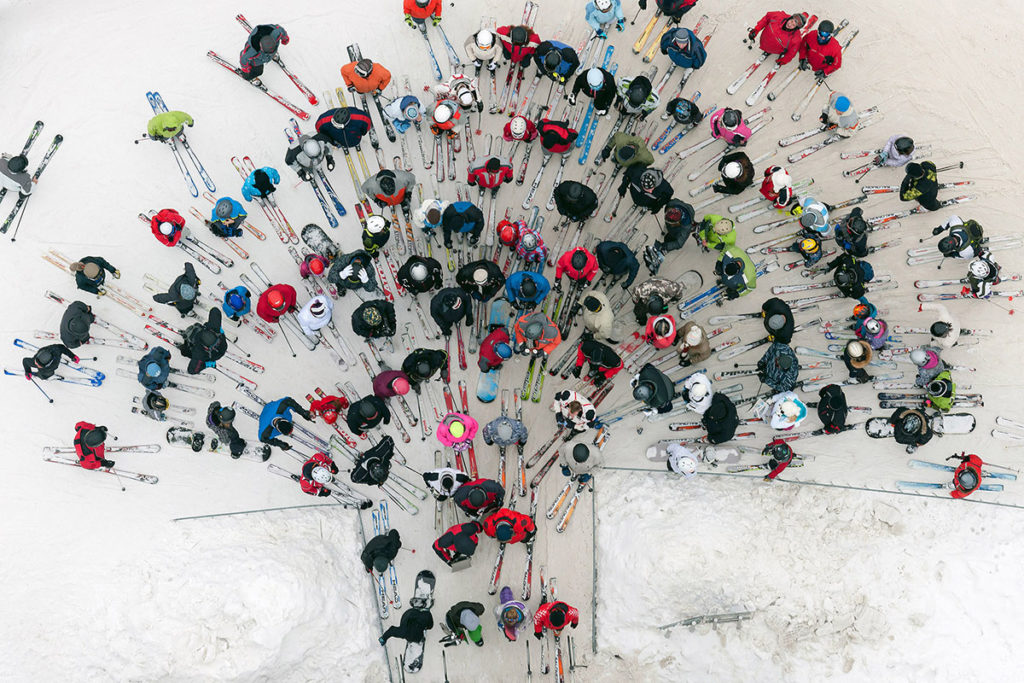
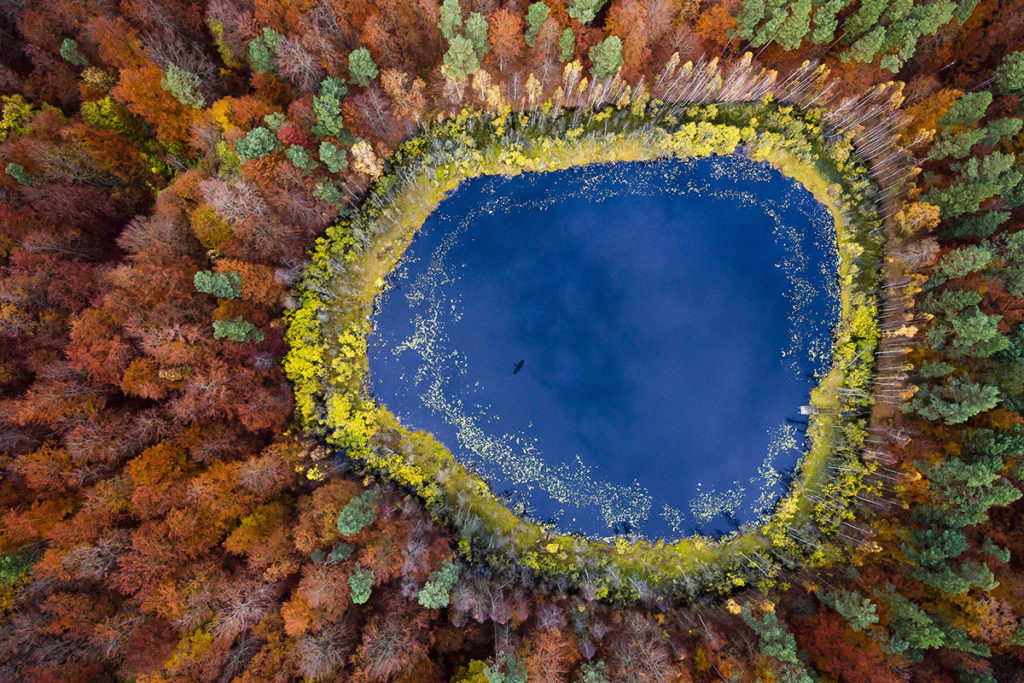
How did you develop an interest in flying? How did photography come into play?
Perhaps this urge to discover and visualize has always been in my blood. I discovered flying in 1996. Just because I had the occasion and my dream of flying had just returned. It was a very interesting moment in Poland. A few years earlier, the communism had fell down, the paragliding – a very new discipline in aviation came to Poland, and I was young. This was even before my studies.
So while flying I discovered an enchanted garden. Nobody else knew how to get there. I remember my first flight over the trees. The space overwhelmed me. The horizon seemed very close, and so I kept going to find out what was over there.
After a few years flying became my drug. Whenever the weather was suitable, I would slip out of work or away from home to soar until I was completely worn out. Back on Earth I could no longer focus enough to design, for my head was full of images from the last flight and preoccupied with the next weather forecast.
I quit my job, stopped seeing my friends, and hardly spent time at home anymore. I needed an excuse to justify what I was doing, so I came up with photography. There were no digital cameras or drones at that time – you needed to be able to slip a new roll of film into the camera in mid-air. I would take off from a meadow next to my house and enter that enchanted, colorful realm at one hundred and fifty meters. I would bring back photographs, like pirate’s booty. I convinced myself, thanks to the photos, that this wasn’t a selfish whim. It was my mission to reveal the unknown, unseen world to the people; to record a portrait of civilization from high above. I felt I was educating and enlightening. Since then I received awards, had exhibitions, and signed photobooks.
Being up in the skies so often and looking down on the traces of human life on Earth, the buildings, roads, fields humans build… Do you think living this experience frequently changes you in some way or another?
I think, all experience is important. All that I was studying, what I saw in art, I got from my parents (both architects), friend, families, books, architecture.
I remember the most difficult exam on my studies, it was from the history of Polish architecture. From the time of the primary to contemporary architecture. I had to be able to draw everything from my memory. All projections, cross-sections, details. Everything. Today I do not remember dates and names from back then, but the grid and the rules are deeply engraved in my brain.
The second layer are the emotions I had. For example, I remember the tension that accompanied my grandparents’ dialogue. They had a beautiful garden at the edge of the forest in Sopot, at the Baltic cost. A wooden, 100 years old, 3 floors black house… My grandmother (she was a painter) was moving snails from the garden to the pine forest, because they were eating flowers. I helped her. And my grandfather moved them back from the forest, because they would die of hunger in dry forest. I helped him as well. So from the very beginning I watched the paradox and tension around me. Which decision is more important and whose truth is more true? I think, that all the experience that created my way of seeing the world reflects in the forms that you can see in my photographs. And all the emotions that I feel reflect on the topics I’m interested in.

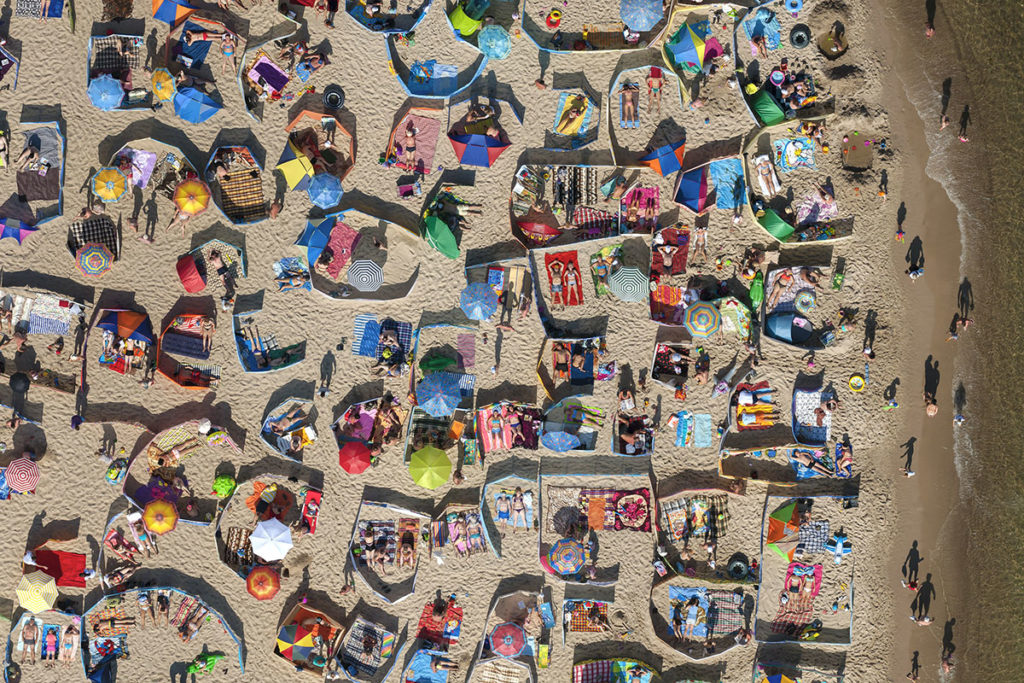
When you are up and above in the skies, what kind of scenes, landscapes you look for to shoot?
Sometimes I’m looking for a landscape to tell a story about the place or issue. During the flood in Sandomierz, in 2010, I was flying above huge flooded area in the southern Poland. It was a documentary project about the catastrophe. To move the viewer’s emotions, I used the most symbolic places I could find: I was taking photographs of cemeteries, railway stations, kids playgrounds, schools, and so on… Places that we all know and are universal.
Sometimes I like to fly over places I know very well. I fly and I wonder what I see is real? What is the nature of the scene and behaviors below me. I fly over and over again the same place. That’s when I can clearly see changes that constitute my very favorite subject: Is what I’m seeing nature settled by man, or is it perhaps an environment created by us to resemble nature… The result of this exploration is reflected in the Side Effects project. It is more a method of visual storytelling than a concrete set of pictures.
Other times, I’m fascinated by a place, by its own phenomenon… I spent my childhood by the seaside. The beach is my natural environment. So naturally it also became the story of my photographic explorations.
Or at least, with the OVER project, I have the eternal quest of finding a world that would belong to nobody but me. This is me searching for a form which only implies the content. A form that guides without defining. It doesn’t matter what I see when looking but what I feel. I gave myself the kind of permission to use the landscape as the medium. I can show the fear, the excitement, ecstasy, fear, obsession, fatigue, harmony and many others emotions… Those emotions are the key to finding a scene. After taking such shots, I find myself wondering why I took this frame from the endless landscape, and what my own form of consciousness would like to communicate to me. To me, flying on the paraglider, piloting and photographing at the same time is a kind of meditation.
“I would like the audience to feel like me while I’m flying. I do not see the world captioned. But I know where the photo was taken, so I can share the coordinates. If the audience is more curious than lazy, than can check the place on Google Maps.”

You have a very unique perspective in the way you frame shots. They have a strong graphical sense and with different textures, patterns and colors, the shots come off almost like beautiful abstract paintings. How would you describe your aesthetic vision in aerial photography?
Thank you. I was supposed to be an architect, just like my parents. Studying was fun and my father showed me all the other things they didn’t teach us at university. Two concepts that made the strongest impression on me, and that continue to influence my thinking, were conceived of by the husband-and-wife team of Katarzyna Kobro and Władysław Strzemiński.
Kobro maintained that designing is all about orchestrating what people experience when they move through a planned space, their passage regulated by space-time rhythms correlating to the proportions of the human body and the golden ratio. Strzemiński, for his part, devised a theory of vision. For him, it didn’t matter what the eye registers mechanically; the essence of “seeing” was what the consciousness perceives. The way we perceive the world is transmitted from one object to another, like a virus.
I was completely engrossed in the movement’s thinking about space, and the dichotomy of what we see in relation to what actually constitutes sight. I completed my studies and started working for an architectural studio.
So all of this experience shaped my way of looking. Studies, experience in the studio, work, and trends in art that I respect… Also protecting my eyes against unwanted influences. I definitely try not to look at competitive images of other artists, because I don’t want to be influenced. In this way my way of looking will be my own, not averaged by all others. I enjoy creating, not a reproduction or processing. This is a conscious decision. Of course, I know that the influence is everywhere. In press, commercial, news, TV, on the street, even on things like cell phone or car. So it is not easy to defend yourself against it.
“They have been using flying for their photography, I on the other hand, used photography for my flying. Thus, the quest for me was born: To tell a story about worldwide problems, using a very local landscape… So, 90% of my photographs are taken in a 50 km radius around my home.”


You never/rarely caption or name your photos, what are the reasons behind this decision?
It depends on where my photographs are used. If they are in press or editorials (by Panos Pictures agency), than they are used to illustrate somebody else’s issue. So the editor needs to know what kind of content he will use. Than my photographs are captioned to avoid the situations of incorrect usage. But with my own artistic projects, I resign from captioning/signing. I would like the audience to feel like me while I’m flying. I do not see the world captioned. But I know where the photo was taken, so I can share the coordinates. If the audience is more curious than lazy, than can check the place on Google Maps.
As far as I know, you only take photos in Poland. Do you ever think about going around the world and flying in different skies, shooting different parts of Earth?
I was flying on many places. In Vietnam, Australia, Mongolia, China, India, Nepal, Spain, Scotland and many more… Even in Turkey (flights from Babadağ, close to Ölüdeniz). Mostly as a competitive paraglider pilot. And in all of those flights I’ve been taking the perspective view, as this is the first natural way of understand and reading a landscape, but when I was trying to find the details, than I feel a bit like an ignorant. To build the precise and real image of a landscape, you have to spend a lot of time in the area. But I know my own neighborhood very well.
This was a serious decision I took from the very beginning. I knew that I’m doing aerial photography because I love to fly, and I was looking for an excuse to do my first passion: flying. So I was super happy to fly around my own home. Also, there are artists who travel around the world to talk about universal topics (like Ed Burtynski, George Steinmetz or George Gestler). So I did not want to duplicate their idea. But I also noticed the difference between us: They have been using flying for their photography, I on the other hand, used photography for my flying. Thus, the quest for me was born: To tell a story about worldwide problems, using a very local landscape… So, 90% of my photographs are taken in a 50 km radius around my home.

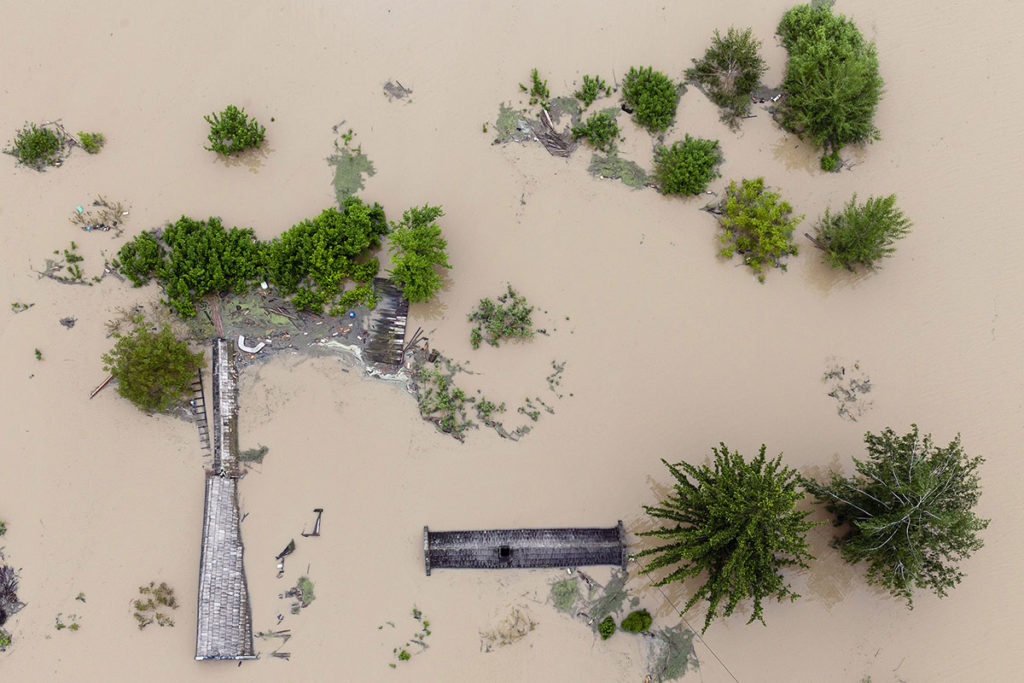

Can you tell us a bit about the technical aspect of it all? What do you fly with, and what do you shoot with?
I fly on a paraglider since 1996, and on a gyroplane since 2010. I own my aircrafts. Now I use a middle format Pentax 645z. In previous years I’ve used a regular Nikon D3X. The camera is never connected to a remote control, and (for photography) I never use a drone. I want to be up there by my own, camera in hand. That means that I don’t have to explain anything, or rely on another person’s (pilot) spatial imagination. I can fly precisely. And I have fun with that.
The paradox is, if I fly, and the battery in my camera dies, I do not know what to do up there myself without the camera. So I land on the ground. And on the ground I do not know what to shoot with the camera (unless for a family situation). So for me only the combination of me + flying alone + camera in hand works.
“All of my observations was born during the flights, between take off and landing. On time of on air meditations, I used the unique environment I have around me during the flight: I move in space, experience objects, changing perspectives, feel the air, clouds, unite with the paraglider and the engine. I meditate. I create.”
What are some of the challenges of aerial photography?
Today everything has changed. The age of humans flying on their own for aerial photography is closed in the visual arts scene. Drones crowd the sky. I even started to worry that my flying didn’t make sense anymore. What is the point in taking photos if people had seen everything already? And even if they haven’t, they can fly a drone themselves. Of course, I also bought a drone myself. The problem is that the drone photos are created on the ground, so the world is discovered on a screen. Whereas I need to fly. I need to exhaust myself with the engine vibrating on my back. I need to feel the space around me. Only then can I release the shutter.
My current aim is to show only the views that need me in person up there, to tell something important that I’ve missed so far, than to come back alive, to survive this quest. From this point of view, the revolution with the drones has freed me. For example, a few years ago I had to wake up on a Sunday at 4am, to be in the sky at 6am, to reach the starting point of a triathlon, to come back home at 10pm, to send photos to the agency and to show this amazing scenes to the people. It was like a mission. Without me, the world would have lost this. Now I know that somebody else will do it with a drone online and live (It’s amazing and great) and it is not my aim anymore. So now I can sleep longer and I can spend more time with my kids.


You express that your latest project, OVER, which also came out as a photobook last fall, is the result of a shift in your photography. Can you tell us about the process of shooting OVER series? What has changed for you?
OVER is about getting out from addiction. My passion of flying became an obsession and finally an addiction. With this project, I went from my previous belief, that “I have to fly”, to a new one: “I do not have to fly. I could fly if I would like to and if I have a reason to do so”. So, I am looking for a reason to bring back a new perspective, a perspective that is impossible to be invented or even speculated on from the ground.”
All of my observations was born during the flights, between take off and landing. On time of on air meditations, I used the unique environment I have around me during the flight: I move in space, experience objects, changing perspectives, feel the air, clouds, unite with the paraglider and the engine. I meditate. I create.
Now I use it in different purpose. To find my own Holy Grail, which will be worth the risk and will bring some additional value into the public space. Something more in the world with conditions for contemplation, large scale, good light, time to feel the object and build a relationship with it.
Finally, now that OVER is out as a photobook and the series go around in different countries as an exhibition, what is next for you? Can you hint us anything about your upcoming projects or ideas you want to pursue?
I work on a few new projects now. One is connected with music that I work with contemporary music composer, Jaroslaw Kapuscinski. We did a small project before (Side Effects, concert music and video version), premiered at the Spoleto Music Festival in Charleston, USA, in 2017. Now, we are working on a new project that will be premiered in 2019.
Also, there are two new photographic projects: Missing Trees about the nature of the woods, and Tribute to, a project in which I bow low to my masters using aerial perspective. And there is the ongoing Afterimages/Weaving project as well.

